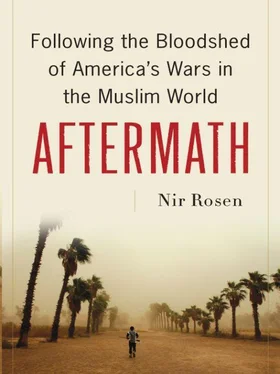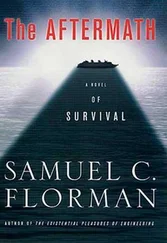In October 2006 Al Qaeda announced the creation of its Islamic state in Iraq. It was not about liberating Iraq from the occupation; it was about a larger global war. But most of the Iraqi resistance had no appetite for this sort of global jihad. Resistance groups began to feud with Al Qaeda, as leaders were assassinated. In 2007 the Islamic Army of Iraq publicly broke with Al Qaeda, condemning its tactics and claiming that thirty members of the Islamic Army had been killed by Al Qaeda. These clashes began in Amriya. That year three leading resistance groups established the Jihad and Reform Front, which condemned Al Qaeda’s tactics (such as targeting civilians) and goals.
Al Qaeda men condemned tribal traditions for being un-Islamic, and actively undermined or usurped traditional authority. This alienated local communities. During the modernizing era of the 1970s, tribes were marginalized as the state asserted itself. But in the ’80s tribes were co-opted and armed in the war against Iran. Tribalism was used by the regime, and tribal leaders who proved loyal servants were empowered. Although tribal leaders were initially ignored by the occupation, the Americans also began to co-opt and collaborate with them during the surge, empowering them to rebel against Al Qaeda.
Sunnis in Anbar might have opposed the occupation, but they also wanted stability, and Al Qaeda brought only chaos. The Sunni tribal “Awakening” began in Anbar, led by Sheikh Sattar Abu Risha. Soon other tribal leaders joined him. Many were not important or powerful until the Americans empowered them. Abu Risha himself was widely known as a highway robber, operating on the highway between Baghdad and Amman. His conflict with Al Qaeda might have had more to do with a dispute over looted goods than ideology. But when Al Qaeda killed his tribesmen, a blood feud between it and the tribes started. Al Qaeda taxes on smuggling also made tribal leaders chafe. The explicit American shift in emphasis from killing the enemy to protecting the population allowed it to be more subtle when dealing with resistance groups. By the end of 2006, the Syrians had also cracked down on illegal border crossings, closing some of the routes Al Qaeda relied on for personnel and supplies. As for Sheikh Sattar, shortly after meeting President Bush, he was blown up outside his home in September 2007, which was probably convenient for both the Iraqi government and the Americans, who now no longer had the problem of disposing of him once he outlived his usefulness.
At the same time, the Sadrists were facing a backlash from fatigued Shiites who saw them as an onerous gang. An increase in American troops focusing on Baghdad was guaranteed to lead to a crackdown on the Mahdi Army, and Muqtada al-Sadr always retreated before the Americans could defeat him, a lesson from his 2004 experience in Najaf. But if his people could lie low and wait for the Americans to reduce their troops once more, they could emerge unscathed and even benefit by letting the Americans cull his ranks of disobedient and criminal-minded elements, strengthening his control.
By the summer of 2007, tension between Maliki and the Sadrists had increased. Though the Sadrists had backed Maliki’s rise to power, they now withdrew from the government, hoping to weaken him. Maliki went so far as to compare Sadrists with Baathists. On the other hand, many of the Sadrists in the government were viewed as corrupt and brutal, so it is also possible that Muqtada withdrew them to clean his movement’s image. The year 2006 was supposed to be the year of the police, according to the Americans. Instead it was the year the police and Mahdi Army became one. The rank and file were dominated by Sadrists. Officers were terrified of their own men. The Mahdi Army took for granted its authority over certain areas. Nobody could challenge the Sadrists—not the Iraqi Security Forces and not the Americans. Just like Sunni criminals using fatwas to justify their crimes under the guise of Al Qaeda, so too did Shiite criminals profit from the booty they seized from Sunnis under the guise of Mahdi Army activities. As a result of its criminal activities, seizure of Sunni property, and control over essential services such as gas and benzene distribution, the Mahdi Army was well funded. Its wealth also allowed it to provide social services so as to maintain and even increase its base of support from urban youth to the many families it now assisted, especially among the displaced.
Control over its men was always a concern for the Mahdi Army leadership. As leaders were arrested, younger, less-disciplined fighters gained more control. Different Mahdi Army units fought each other. As Mahdi Army territory increased, its leadership lost control over local units. Splinter groups terrorized and preyed on people in the name of the Mahdi Army. Even supporters of the Sadrists began to resent the Mahdi Army.
In the summer of 2007, six months into the surge, the Mahdi Army was still cleansing Sunnis in areas like Hurriya. Although Hurriya was majority-Shiite, its Sunnis were well organized and strong. Shiites were initially on the defensive, with many of their civilians killed on a daily basis. To defeat the threat of Sunni militias, the Mahdi Army systematically cleansed all the areas and began to encroach on the nearby majority-Sunni Adil neighborhood. The assassination of businessmen and religious leaders struck fear into the community, weakening it and facilitating its flight. Following attacks on Shiites, the Mahdi Army would pile Sunni corpses on streets in revenge. Amriya and Ghazaliya were the last two neighborhoods in western Baghdad still fully in Sunni hands. Dora was still contested. In eastern Baghdad, only Adhamiya remained in Sunni hands.
In late August 2007, Mahdi Army men clashed with opponents from the Supreme Council in Karbala. About one hundred people were killed and much property was destroyed while hundreds of thousands of pilgrims were in the city to mark the Mahdi’s birthday. An outraged Maliki, who considered Karbala his town, flew down and made it clear he was the boss, wearing a pistol and giving orders to his special forces to secure the city and arrest Mahdi Army men, in some cases leading his own men into neighborhoods. Maliki realized that the Mahdi Army could threaten his authority. On August 29 Muqtada declared a tajmid (freeze), ordering his army to halt its operations for six months. Soon after he turned on unruly members of his movement, killing or expelling them.
The Mahdi Army cease-fire was the most important factor in the decline in violence. Until the freeze, eight months into the surge, the civil war was still raging and Sunnis were being cleansed from Shiite neighborhoods that had already been walled off. The militias were still advancing on the west side of the Tigris, far from their base in the east, until the freeze halted their advance all at once. The freeze would cost the movement dearly, because in a way its expansion was its purpose. Sadrists had few firm principles except being opposed to the occupation and federalism. The movement represented the angry, dispossessed poor, and it had to express their anger in some way. By the time of the freeze the sectarian killings were beginning to decline. But now the Mahdi Army was in control of areas where it did not have a natural constituency, such as with middle-class or better-educated Shiites. With the increase in American troops and change in their tactics, the Mahdi Army was also less necessary for self-defense, and its excesses were harder for Shiites to tolerate.
A lesser-known element in the new counterinsurgency approach was increased attacks against the Mahdi Army’s key nodes, support zones, and capabilities. Protecting the population through bases inside neighborhoods and erecting concrete walls were the most obvious and essential elements. But the Americans also increased their offensive action against the Mahdi Army both inside and outside Baghdad. This was a key reason for Muqtada’s cease-fire. From February to August 2007, the Americans and their allies arrested an average of one thousand suspected Mahdi Army men per month, and killed many as well. This had a chilling effect on the Shiite militia. The Mahdi Army cease-fire held despite attempts by the Supreme Council and other rivals to provoke the Sadrists into confrontations.
Читать дальше











